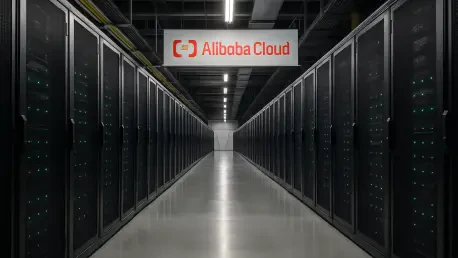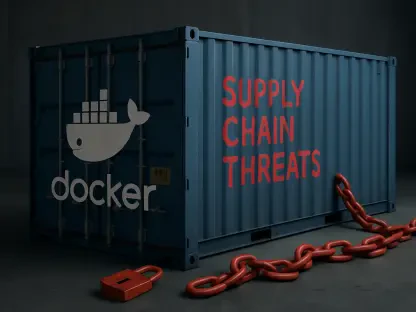I’m thrilled to sit down with Maryanne Baines, a renowned authority in cloud technology with extensive experience evaluating cloud providers, their tech stacks, and how their solutions apply across various industries. Today, we’re diving into groundbreaking research from a major cloud provider on innovative tools designed to tackle network outages, optimize costs, and enhance performance in large-scale cloud environments. Our conversation explores the motivations behind this research, the specifics of cutting-edge systems aimed at improving reliability and efficiency, and what these advancements mean for the future of cloud computing.
How would you describe the primary motivations driving recent research into cloud tools that aim to minimize outages and reduce operational costs?
The push to reduce outages and costs stems from the core needs of cloud providers and their customers. Outages directly hit customer trust and can lead to significant financial losses, while high operational costs eat into profitability. Providers are under pressure to deliver seamless, reliable services at competitive prices, especially as businesses increasingly rely on cloud infrastructure for critical operations. This research reflects a broader industry trend to maximize efficiency—squeezing more performance out of existing systems rather than just throwing more hardware at the problem. It’s about staying ahead in a hyper-competitive market while meeting the growing demand for uptime and affordability.
What makes addressing network failures such a critical focus for cloud providers today, and how does this impact their customers?
Network failures are inevitable in large-scale cloud environments, and even a few seconds of downtime can disrupt user sessions, damage customer experiences, or worse, cause data loss. For providers, it’s not just about maintaining service—it’s about preserving reputation. Customers, especially enterprises, expect near-perfect reliability, and when that’s not delivered, they often resort to costly workarounds like redundant resources. This research into fast recovery systems is crucial because it minimizes those disruptions, directly improving end-user satisfaction and reducing the burden on tenants to build their own backup plans.
Can you walk us through how a system designed for rapid failure recovery in cloud networks functions to keep services running smoothly during unexpected issues?
Certainly. Take a system like ZooRoute, which is built for fast failure recovery. It continuously monitors the network, mapping out alternative paths in real-time. When a link fails, it doesn’t need to scramble for a solution—it already has a pre-determined bypass ready to redirect traffic instantly. This proactive approach cuts recovery time from minutes to seconds, which is a game-changer compared to traditional methods like fast rerouting. Over time, this can slash outage durations dramatically, ensuring services stay online and users barely notice a hiccup. It’s a brilliant example of preemptive problem-solving in cloud tech.
Shifting gears to load balancing, how do new approaches improve the distribution of traffic in cloud networks, and what benefits do they bring to operators and users?
New systems for load balancing, like Hermes, tackle inefficiencies head-on by smarter traffic distribution at critical layers of the network. They leverage advanced technologies like eBPF, which runs tasks directly in the kernel to filter and prioritize requests before they hit overloaded servers. This results in a massive reduction in resource imbalances—think 90% less CPU strain—and cuts down on operational costs significantly. For operators, it means lower expenses and fewer system hangs. For users, it translates to smoother, more reliable performance, even during peak loads, without the frustration of delays or crashes.
What role does innovative workload management play in optimizing hardware like SmartNICs within a cloud infrastructure?
SmartNICs, which are network cards with built-in processors, handle critical networking and storage tasks to free up main CPUs. However, uneven workload distribution often leaves some SmartNICs overloaded while others sit idle. Systems like Nezha address this by dynamically shifting tasks to underutilized hardware, eliminating bottlenecks without the need for costly new equipment. This not only boosts performance—by managing tasks more effectively within virtual environments—but also extends the lifespan of existing infrastructure. It’s a cost-effective way to ensure every piece of hardware pulls its weight.
How do you see these advancements influencing the broader landscape of cloud computing for both providers and their customers in the coming years?
These advancements signal a shift toward software-driven optimization in cloud computing, which I believe will redefine industry standards. For providers, tools that cut outages and costs mean they can offer more competitive pricing and higher reliability, strengthening their market position. For customers, it’s about experiencing fewer disruptions and potentially lower bills as providers pass on savings. Long-term, I expect this focus on efficiency to drive innovation in automation and predictive analytics, where systems don’t just react to issues but prevent them entirely. It’s an exciting time as the cloud becomes more resilient and accessible.
What is your forecast for the future of cloud infrastructure management given the rapid pace of these technological developments?
I’m optimistic that we’re heading toward a future where cloud infrastructure management is almost entirely proactive rather than reactive. With the integration of AI and machine learning, combined with systems like the ones we’ve discussed, I foresee networks that can predict failures before they happen and self-optimize in real-time. We’ll likely see even tighter cost controls as providers refine these tools, making cloud services more affordable for smaller businesses. The challenge will be balancing complexity with usability, but if current trends hold, the next five years could bring a level of stability and efficiency we’ve never seen before in cloud computing.









